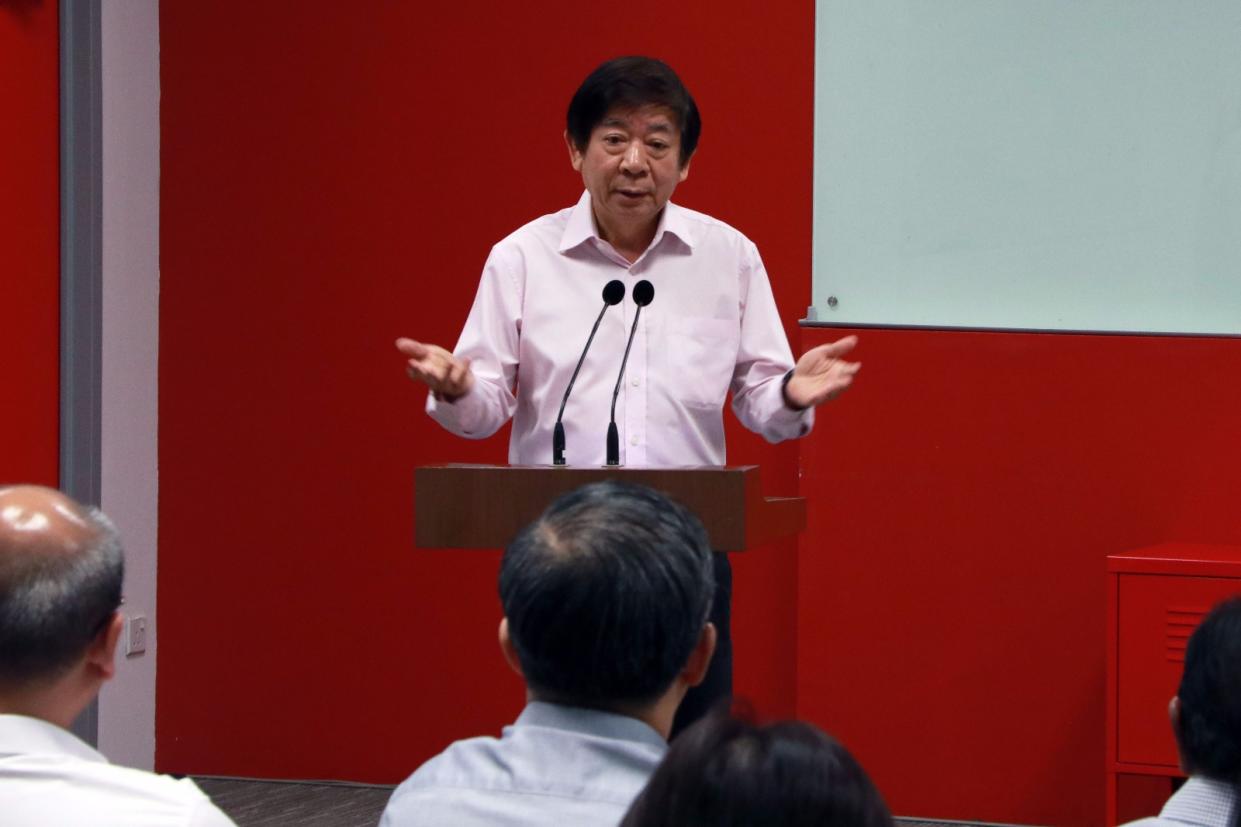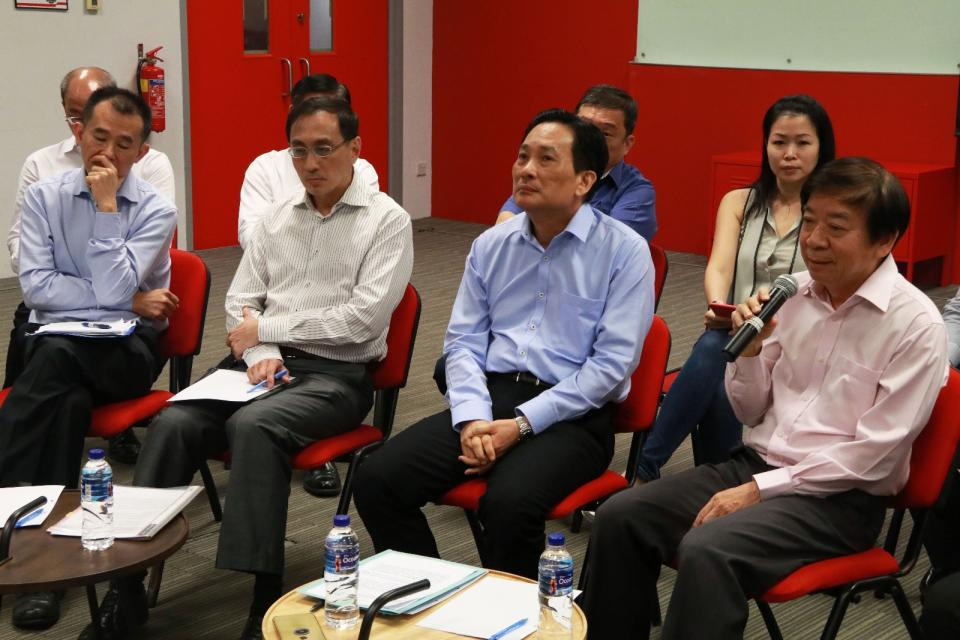SMRT maintenance team at Bishan 'failed us' during NSL disruption: Khaw Boon Wan

Transport Minister Khaw Boon Wan lambasted the SMRT personnel in charge of anti-flooding measures at Bishan MRT, even as he apologised for the massive North-South Line disruption earlier this month that affected some 250,000 commuters.
“The incident on the evening of October 7 was preventable…We are all sorry that it did. (But) if you ask me, it’s too embarrassing to even talk about it. It is so simple that it should not have happened…yin gou li fan chuan,” said Khaw, using a Chinese proverb that means failing at a simple task.
“That’s why we have to nail down who (is) responsible. I look to SMRT to do what is right…something must happen to the staff.”
Referring to the spate of MRT breakdowns in recent months, the minister added, “(The latest incident) pushed back the recovery of public confidence in us…the SMRT team in charge of maintaining the anti-flood system at Bishan has failed us.”
Khaw was speaking at a media briefing on the breakdown on Monday (16 October), which was also attended by top officials from the Land Transport Authority, the Government Parliamentary Committee for Transport and the Public Transport Council. LTA said last week that the disruption was caused by faulty water pumps that caused the tunnel between Bishan and Braddell to be flooded during a torrential downpour.
During the briefing, SMRT Corporation CEO Desmond Kuek, SMRT Corporation and SMRT Trains Chairman Seah Moon Ming and SMRT Trains CEO Lee Ling Wee also apologised for the disruption. Kuek said that while much progress has been made to instill a positive work culture in SMRT, he alluded to “deep-seated cultural issues” within SMRT that are still being dealt with.
Asked to elaborate, Kuek said, “We have identified that the level of accountability by supervisors is an area that needs to be strengthened. And the level of ownership and responsibility over what is not working well, and the openness in which some of these issues on the ground are reported are areas that we seek to improve as well.”
The cause of the disruption and remedial measures
SMRT and LTA officials explained that an anti-flood system failed to work, leading directly to the disruption. This system has been installed between five stations, including Bishan and Braddell.
Each system is equipped with a storm water pit, which can hold more than 5,000 cubic metres of water for six hours. It is also equipped with three portal pumps, which drain water from the pit. During a storm, the pumps are activated by float switches, or sensors, as the water level rises.
However, during the disruption on 7 October, the float switches failed to activate the pumps. Even though only an estimated 640 cubic metres – or about 13 per cent of maximum storage capacity – was collected by the pit, most of it went into the tunnel.
This means that the pit was already close to full on 7 October, indicating that the switches were already faulty before the incident. After the water had been cleared from the pit, it was discovered that while the pumps were functional, the bottom of the pit was lined with sludge and debris.
Lee said that in the wake of the incident, the faulty switches were replaced. Checks were also conducted on the other anti-flood systems, and all defects found were rectified. Also, all pumps were replaced as a precautionary measure, and the frequency of maintenance of the anti-flood system will be increased from quarterly to monthly.
In response to questions from reporters, Lee said that the Bishan system was last inspected in June, and had been due for an inspection on 18 September. This was pushed to 12 October, as the maintenance team said they could not get a slot for track access. He added that the Bishan portal pumps and float switches were last replaced in 2011.

Disciplinary measures
Last Thursday, it was reported that Ng Teck Poo, a senior SMRT executive in charge of maintenance and systems, had been replaced by Siu Yow Wee. Given that Kuek told reporters that the internal investigation into the disruption is ongoing, why did SMRT take action against just one individual?
In response, Seah said, “If the thing fail, due to whatever reason, you take responsibility… That’s the message to each and every one at SMRT. You take responsibility before anything. Today, we all come here to say we’re sorry. We’re taking responsibility (for) the failure. We cannot find any excuse or any reasons.”
Seah added that the annual bonuses for the Bishan maintenance team members and its leader “will be affected”.
And while it is up to LTA to decide whether to impose penalties and/or fines on SMRT for the disruption, Khaw noted, “My preference is not to go back to this old system of penalty and fines, because it created a very adversarial relationship between the regulator and operator….when you have this acrimonious relationship, it is very difficult to achieve excellence.”



